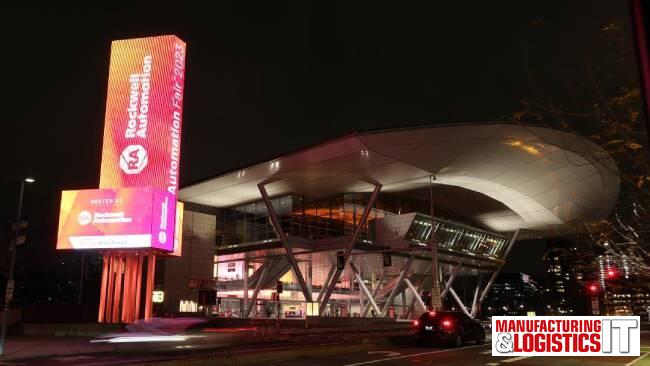|
Getting your Trinity Audio player ready...
|
Rockwell’s Andrea Ruotolo discussed the emergence of “twin transformers” and their likelihood to outperform competitors.
Sustainability has been a business factor in manufacturing for more than two decades and the industry as a whole has made significant strides toward becoming less energy and resource intensive. But global economic issues over the past few years have slowed some of industry’s progress.
“When the market is performing well, companies focus more on sustainability initiatives. But when the market struggles, we see the inverse as they cut back on these initiatives and focus on revenues and profits,” said Alex West, senior principal analyst for industrial sustainability at technology research company Omdia, during the ESG (environmental, social, governance) Summit at Rockwell Automation’s Automation Fair 2023.
As a result, West said manufacturers are falling behind on their sustainability initiatives from 2022 to 2023. To move forward sustainably in a way that also addresses financial concerns, West said companies need to “move from a siloed approach to sustainability to an integrated one to avoid potential negative impacts on their operations.”
Making the move to an integrated sustainability approach—where sustainability initiatives are not treated as standalone goals but as part of the manufacturing process—can be done by merging two megatrends: sustainability and digital transformation, said Andrea Ruotolo, global head of customer sustainability at Rockwell Automation.
This merger of sustainability and digital transformation is not a distant strategy for manufacturers but an impending requirement.
At the ESG Summit, Tom O’Reilly, vice president of sustainability at Rockwell Automation, said, “The regulations are coming, such as the EU Corporate Sustainability Reporting Directive. In this directive, any publicly listed company in Europe will have to report around their Scope 1, 2 and 3 emissions and their targets and have them audited. So suddenly, sustainability reports will be as important as financial reports,” he said.
Creating the sustainable digital factory
Recognizing the need to combine sustainability and digital transformation has led Rockwell Automation and Accenture to focus on developing the Sustainable Digital Factory, where sustainability is not looked at as a separate target but is seen as part of the manufacturing process. Other partners directly involved in this effort include PTC, Microsoft, Johnson Controls and Purdue University.
“If you look at this problem and try to solve it inside your four walls, it’s going to be very difficult,” said Andy Kohok, managing director at Accenture. “This is not an issue that’s solvable just by Accenture or Rockwell. That’s why we brought our alliance partners together on this.”
In the Sustainable Digital Factory, “key performance indicators (KPIs) have to be merged between business operations and sustainability to realize the positive and negative impacts—only then can you make the right decisions,” said Kohok.
He explained that industry’s long focus on productivity has enabled manufacturers to track several metrics in great detail. For example, everybody today knows how to track their overall equipment effectiveness (OEE) and multiple tools exist to do it that provide a high level of accuracy.
So why can’t we do this with sustainability? Kohok asked.
Because we keep looking at the problems without seeing the intersection between sustainability and productivity.
“The assembly line that’s making product is also impacting carbon emissions, water and energy use,” he said, “and this is all considered in our solution and why we call it the Sustainable Digital Factory. We’re bringing all these together on a single pane of glass.”
A high-level view of the Sustainable Digital Factory architecture, previewed at the Automation Fair ESG Summit, showed how real-time and historical data—from sources such as CAD, MES and SCADA systems to enterprise asset management, customer relationship management and ERP systems—can be ingested, analyzed with artificial intelligence and provided to users with context against sustainability scorecards. Key performance indicators such as total manufacturing cost, asset and plant OEE versus thresholds, line and plant throughput versus expectations, as well as energy utilization, water use, waste and emissions versus targets can then be delivered via one pane of glass using persona-based KPIs.
Technology suppliers noted in this architecture preview included Rockwell Automation, PTC, Cognite and Microsoft Cloud. Kohok noted that this architecture also addresses security operations and monitoring, data and model governance, and business and regulatory rules.
“If you improve your production line, you should be able to predict what the impact will be on sustainability,” said Kohok. “If you’re a plant supervisor, you should know which assets you’re using and if you’re using them for efficiency purposes. Only then you can make the right decisions around productivity and sustainability.”
Ruotolo pointed out that companies that effectively combine sustainability within their digital transformation are called “twin transformers.” According to Accenture, such companies are 2.5x more likely to be among tomorrow’s top-performing businesses.



